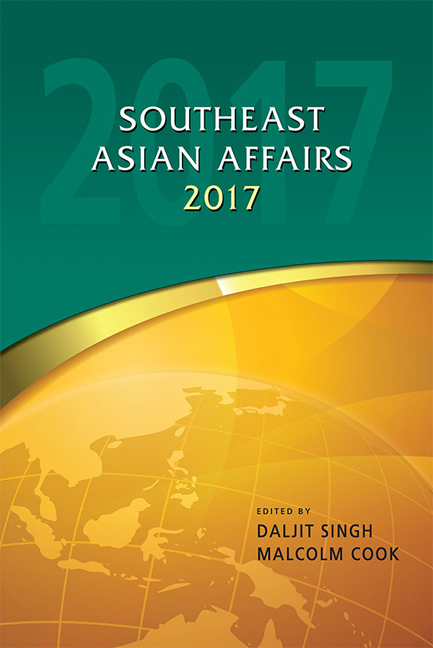Book contents
Thailand's Northeast “Problem” in Historical Perspective
from THAILAND
Published online by Cambridge University Press: 12 January 2018
Summary
The turbulent events of the last fifteen years have brought to the fore a number of critical issues in Thailand's political and social structure.
One of these issues concerns the unparalleled attention given to regions in the nation's political make-up, especially the role of the northeast region. It is with this region that the present chapter will be concerned. In the present circumstances of the recent passing of King Bhumibol, it is more important than ever to understand the roots of the regional and political divisions in Thailand.
I will first summarize a few salient points about the northeast, also termed Isan, and sometimes termed the Khorat Plateau. As far as terminology is concerned, I will use the three terms interchangeably, and will generally refer to Siam, rather than Thailand, for events prior to 1939 (when the name Thailand was adopted). It should be noted, though, that the term “Isan”, supposedly meaning “northeast”, is of rather recent origin, used for an administrative unit called a monthon only since 1900.
Most scholars would agree that the vast majority of those living in the northeast are of Lao descent, perhaps eighty per cent. It is beyond the scope of this chapter to enter into the complex issue of ethnic identity, but this question has been discussed informatively by a number of writers.
The northeast region consists of 20 of the country's 77 provinces. Many of these Isan provinces are among the poorest in the nation. The northeast is a significant region in a number of respects, in terms of land area, production, population, and also in terms of the political landscape. The twenty provinces account for approximately a third of the nation's land area and roughly a third of the population. These ratios have remained fairly constant since the beginning of the twentieth century, when Thailand's present-day boundaries were settled and the first population census was taken. In 2014, Thailand's population was estimated at just over 67.9 million, of which 18.9 million lived in the northeast. Although the proportion of the northeast's to Thailand's total population has been falling in recent years, the northeast remains easily the most populous of the major regions.
- Type
- Chapter
- Information
- Southeast Asian Affairs 2017 , pp. 367 - 384Publisher: ISEAS–Yusof Ishak InstitutePrint publication year: 2017



